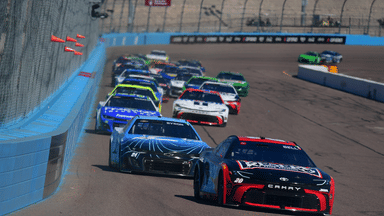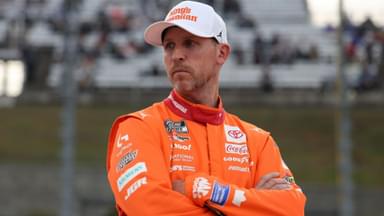Eyeing a fourth championship, Joey Logano is set to commence his 18th NASCAR Cup season at Bowman Gray Stadium with the Clash. And he will face new challenges this year, posed by new tracks and an influx of drivers from various motorsports backgrounds and countries. Logano sees the entry of world-class drivers from other genres as a boon for stock car racing, one that would expand NASCAR’s fanbase and reach, and enrich its racing culture.
Advertisement
Contrary to a prevalent school of thought, Logano feels the NASCAR talent pool does not need to beat drivers from other motorsports to legitimize their quality or establish superiority. He believes that the presence of these drivers serves a larger purpose.
“It brings a different fan demographic to what we do. In a way, I don’t say it legitimizes what we do in any way because I think what we do, our talent pool that we have as far as drivers, they’re absolutely incredible,” said Logano.
The three-time Cup Series champion acknowledged the positive impact international drivers could have on NASCAR’s global appeal.
“Whether that’s from Indy Car or F1 or from the Supercar Series in Australia. We’ve seen that and it brings those fans that may not watch NASCAR racing and say, ‘Well, I’m gonna watch because this guy is in there. I want to see how he does against the NASCAR guys’,” added Logano.
The Team Penske driver also reflected on Australian ace Shane van Gisbergen’s entry in 2023, and the impact of his victory on his debut in the NASCAR race in Chicago with Trackhouse Racing’s Project 91.
This season, Justin Marks is set to introduce Helio Castroneves, an IndyCar racing star, to the NASCAR circuit at the Daytona 500 race. His entry has been eased by NASCAR’s new Open Exemption Provisional (OEP) rule.
NASCAR’s OEP rule and its impact
The recently announced Open Exemption Provisional rule aims to accommodate drivers of exceptional caliber, allowing them to bypass the usual qualifying processes for high-profile events like the Daytona 500. It will be implemented only when the entry list surpasses the Cup Series’ standard starting field of 40 cars.
The OEP requires drivers to receive prior approval from NASCAR. The approval will be granted on a case-by-case basis, with a driver’s racing pedigree and achievements being crucial factors. Castroneves, a four-time Indianapolis 500 winner, perfectly fits the criteria for OEP.
Kenny Wallace recently explained how this provision will change the game for NASCAR.
“Why is NASCAR giving out provisionals? Because we don’t have any superstars, this is a way for NASCAR to make sure the superstars are in the race so we can promote them. So TV can start promoting Helio Castroneves right now,” elaborated Wallace.
John Probst, NASCAR’s senior vice president of racing development, added, “It’s meant to create energy around a particular race… It’s meant to energize our sport and bring in some excitement.”
The reciprocal perks of NASCAR’s crossover initiatives were seen last year when Kyle Larson competed in the IndyCar 500. His participation not only put a positive spotlight on NASCAR drivers but also attracted IndyCar enthusiasts, who were so taken by Larson’s performance that they began following stock car racing events.
So, the benefits of such crossover engagements are many and extend in both directions. A win-win situation for all, as Logano pointed out.







